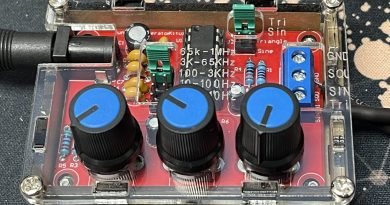Welding Plastic with a Soldering Iron
When the plastic casing of an object gets cracked or broken into pieces, most people just buy a new one; however, plastic is remarkably malleable and is quite easy to melt and reattach with a soldering iron. Although the repaired object will not look exactly as it did when it was new, with practice you can make smooth plastic welds that are not cosmetically obvious.
Using your soldering iron to weld plastic is not limited to repairs: you can weld plastic for fabrication and even artistic purposes. You do not need to go out and buy a plastic welding kit if you already own a soldering iron or station — you can begin welding plastic today. Let’s take a look at the process.
(Note: Before you try your first weld, you may want to experiment on scrap plastic in order to learn how long you will need to press the soldering iron on particular points in the plastic.)
Begin by thoroughly cleaning the plastic with soap and degreaser, even if it does not appear to be dirty. Sand the edges of the plastic down so that they are not jagged. Next you will plug in the soldering iron and give it enough time to warm up, which should only take a few minutes.
Push the two pieces of plastic together and hold them there while you run the soldering iron tip along the seam until the two pieces of plastic are partially melted together. While the pieces of plastic are still hot and movable, adjust them so that they fit together as best as you can manage.
You can strengthen the weld by adding small pieces of plastic — ideally thin strips — to the seam. Then fully melt these pieces of plastic by pressing them with the soldering iron tip until they are liquefied. Distribute the liquefied plastic smoothly along the length of the seam with soldering iron tip.
The last step is to go over the seam and the plastic surrounding it with the soldering iron using swift, smooth strokes. Once you have some practice with this technique, you should be able create an even, smooth plastic weld.
